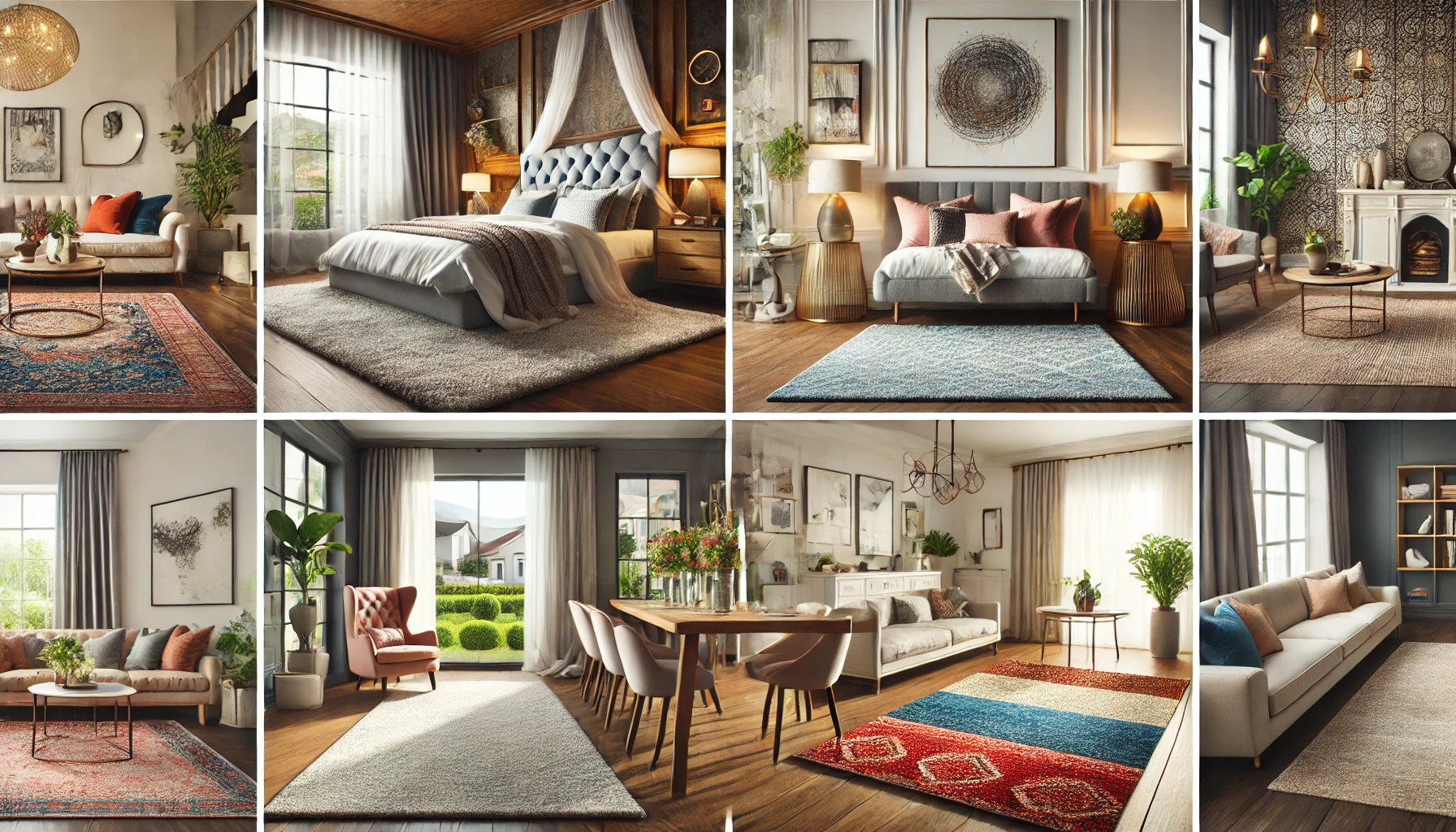Rugs are more than just floor coverings—they add warmth, texture, and personality to your home. However, with so many styles, sizes, and materials to choose from, finding the perfect rug can feel overwhelming. Here are some tips to guide you in selecting the ideal rug for your space.
1. Consider the Purpose of the Room
The room’s function plays a significant role in determining the type of rug you need:
- Living Room: A large area rug anchors the space and ties together your furniture. Choose a durable material that can handle foot traffic.
- Bedroom: Opt for a plush rug to create a cozy and luxurious feel underfoot.
- Dining Room: Look for a rug that’s easy to clean and large enough to accommodate the table and chairs.
- Entryway or Hallway: Durable, low-pile rugs work best to withstand heavy use and are easier to maintain.
2. Select the Right Size
A rug that’s too small can make a space feel disjointed, while one that’s too large might overwhelm the room. Follow these general guidelines:
- In the living room, the rug should be large enough to fit at least the front legs of your furniture.
- In the bedroom, place the rug so it extends beyond the bed on all sides by at least 18 inches.
- For the dining room, ensure the rug is large enough so that chairs remain on the rug even when pulled out.
3. Choose the Right Material
The rug material affects its durability, feel, and maintenance. Here are some popular options:
- Wool: Soft, durable, and great for high-traffic areas.
- Cotton: Lightweight, affordable, and easy to clean.
- Silk: Luxurious and elegant, but best suited for low-traffic spaces.
- Jute or Sisal: Natural and eco-friendly, ideal for casual settings.
- Synthetic fibers: Budget-friendly and stain-resistant, perfect for homes with kids or pets.
4. Pick a Style That Matches Your Decor
Your rug should complement the overall aesthetic of the room. Whether you prefer a bold pattern, subtle neutral tones, or vibrant colors, make sure the rug aligns with your existing furniture and color scheme. If your furniture and walls are neutral, a patterned or brightly colored rug can serve as a statement piece.
5. Don’t Forget About Maintenance
Some rugs require more care than others. For example:
- High-pile rugs might need regular vacuuming to prevent dirt buildup.
- Rugs in spill-prone areas should be stain-resistant and easy to clean.
- Rotate rugs occasionally to ensure even wear, especially in high-traffic areas.
6. Test Before You Buy
If possible, test a sample in your space before committing to a rug. This can help you visualize how it will look with your furniture, lighting, and overall decor.
Final Thoughts
Choosing the perfect rug doesn’t have to be daunting. By considering the room’s purpose, size, material, style, and maintenance requirements, you can find a rug that’s both functional and beautiful. Remember, a well-chosen rug can transform your space and make it feel complete. Happy decorating!


Leave A Comment